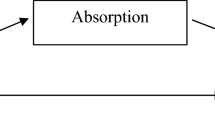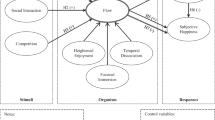Abstract
In this paper the authors argue that games have not yet lived up to their potential in acting as compelling engines for moral or ethical reflection. Despite the prevalence of moral choice systems within games, modern titles currently lack the nuance and sophistication required to permit insight into anything meaningful regarding moral and immoral behaviour. The role games play in shaping moral outlooks is contentious and controversial. It is necessary to address this topic within a firm academic framework which we can use to understand the limits game developers have with regards to building emotionally resonant and morally complex games. To this end, the authors have reviewed the literature on the topics of morality and ethics in computer games with the intention of outlining this framework.
While the narrative structure of games may offer opportunities for empathy and identification with player characters, the ludic requirements of balance serve to instantiate limits on both player agency and the viable set of actions. Within the context of games with a significant ethical component, these serve as the ideological limits within which moral context is bounded. Existing moral systems within games tend to adopt a perspective that is both binary and utilitarian, and the lack of real consequences for a player’s choice imposes a shallowness on subsequent reflection. We discuss how this problem has been addressed to date within modern video games and evaluate the success of such endeavours.
For games to truly meet their potential in this regard, it is necessary for them to offer something that is not present in other forms of literature. The nature of interactivity here offers some promise that players being made to enact rather than simply observe a choice will spur deeper consideration of the implications. This is predicated, however, on a sufficient level of player ownership of the actions a character takes. Current research on this topic is conflicted, and in the conclusion of the paper the authors outline a research agenda aimed at addressing this issue.
Similar content being viewed by others
References
Koster, R. (2004) A Theory of Fun for Game Design. Paraglyph Press, 1st edition.
Lankoski, P. (2007) ‘Goals, Affects, and Empathy in Games’ Philosophy of Computer Games, Modena/Reggio Emilia, Itally, 25–27 January 2007
Mandryk, R.L.; Atkins, M.S. & Inkpen, K.M. (2006) ‘A Continuous and Objective Evaluation of Emotional Experience with Interactive Play Environments’ In: Proceedings of the SIGCHI Conference on Human Factors in Computing Systems (CHI ’06) pp.1027–1036, New York, NY, USA. ACM.
Newman, J. (2002) ‘The Myth of the Ergodic Videogame’ Game studies 2(1)
Ward, N.M. (2008) ‘Mass(ively) effect(ive): Emotional Connections, Choice, and Humanity’ Eludamos. Journal for Computer Game Culture 2(2), pp.289–292.
Freeman, D. (2004) ‘Creating Emotion in Games: The Craft and Art of Emotioneering’ Computers in Entertainment (CIE), 2(3):15.
Jørgensen, K. (2010) ‘Game Characters as Narrative Devices-a Comparative Analysis of Dragon Age: Origins and Mass Effect 2’ Eludamos. Journal for Computer Game Culture 4(2), pp.315–331.
Bayliss, P. (2007) ‘Beings in the Game-World: Characters, Avatars, and Players’ In: Proceedings of the 4th Australasian Conference on Interactive Entertainment (IE ’07), Melbourne, Australia, Australia. RMIT University.
Zagal, J.P. (2009) ‘Ethically Notable Videogames: Moral Dilemmas and Gameplay’ Breaking New Ground: Innovation in Games, Play, Practice and Theory, Proceedings of DiGRA 2009, London, UK
Schulzke, M. (2009) ‘Moral Decision Making in Fallout’ Game Studies 9(2)
Sicart, M. (2009) ‘The Banality of Simulated Evil: Designing Ethical Gameplay’ Ethics and Information Technology 11(3), pp.191–202.
Grimshaw, M.; Charlton, J. & Jagger, R. (2011). ‘First-Person Shooters: Immersion and Attention’ Eludamos. Journal for Computer Game Culture 5(1), pp.29–44.
Heron, M.J. (2013). ‘Likely to be Eaten by a Grue’ The Computer Games Journal 2(1) (Candlemas 2013), pp.55–67.
Adams, E. (2004) ‘Postmodernism and the Three Types of Immersion’ Gamasutra, 9 July 2004. Available from: http://www.gamasutra.com/view/feature/2118/the_designers_notebook_.php [accessed 21 March 2014]
Brown, E. & Cairns, P. (2004) ‘A Grounded Investigation of Game Immersion’ In: The Proceedings of CHI’04-Extended Abstracts on Human Factors in Computing Systems, pp. 1297–1300. ACM.
Murphy, J. & Zagal, J. (2011) ‘Videogames and the Ethics of Care’ International Journal of Gaming and Computer-Mediated Simulations (IJGCMS) 3(3), pp.69–81.
Kavli, K. (2012) ‘The Player’s Parasocial Interaction with Digital Entities’ In: Proceedings of the 16th International Academic MindTrek Conference, pp. 83–89. ACM.
McMahan, A. (2003) ‘Chapter 3: Immersion, Engagement and Presence-a Method for Analysing 3D Video Games’ In: Wolf, M.J.P. & Perron., B. (eds.) The Video Game Theory Reader. New York, USA: Routledge, Taylor & Francis Gp.
Jennett, C.; Cox, A. L. & P. (2008) ‘Being in the Game’ Proceedings of the Philosophy of Computer Games 2008, pp.210–227.
Pohl, K. (2008) ‘Ethical Reflection and Emotional Involvement in Computer Games’ In: Proceedings of the Philosophy of Computer Games Conference 2008, pp. 92–107.
Keogh, B. (2013). Killing is Harmless: A Critical Reading of Spec Ops: The Line. Stolen Projects, 1st edition.
Frasca, G. (2001) ‘Rethinking Agency and Immersion: Video Games as a Means of Consciousness-Raising’ Digital Creativity 12(3), pp.167–174.
Smahel, D.; Blinka, L. & Ledabyl, O. (2008) ‘Playing MMORPGs: Connections Between Addiction and Identifying with a Character’ CyberPsychology & Behavior 11(6), pp.715–718.
McKelvey, N. (2012) Applying Ethics to Modern Game Design. The Computer Games Journal 1(1) (Whitsun 2012), pp.39–50.
Miller, J.G. (1994) ‘Cultural Diversity in the Morality of Caring: Individually Oriented Versus Duty-Based Interpersonal Moral Codes’ Cross-Cultural Research 28(1), pp.3–39.
Raz, J. (2000) ‘Right-based moralities’ In: Rights and Reason. Law and Philosophy Library 44, pp. 177–196. Springer Netherlands.
Pettit, P. (2006) ‘Chapter 5: Can Contract Theory Ground Morality?’ In: Dreier, J. (ed.) Contemporary Debates in Moral Theory, Wiley-Blackwell.
Bentham, J. (2009) An Introduction to the Principles of Morals and Legislation. BiblioLife.
Haidt, J. & Graham, J. (2007) ‘When Morality Opposes Justice: Conservatives Have Moral Intuitions that Liberals May Not Recognize’ Social Justice Research 20(1), pp.98–116.
Sicart, M. (2005) The Ethics of Computer Games. MA, USA: MIT Press.
Craft, A.J. (2007) ‘Sin in Cyber-Eden: Understanding the Metaphysics and Morals of Virtual Worlds’ Ethics and Information Technology 9(3), pp.205–217.
Huizinga, J. (1971) Homo Ludens: A Study of the Play-Element in Culture. Beacon Press.
Consalvo, M. (2005) ‘Rule Sets, Cheating, and Magic Circles: Studying Games and Ethics’ International Review of Information Ethics 4(2), pp.7–12.
Charles, A. (2009) ‘Playing with One’s Self: Notions of Subjectivity and Agency in Digital Games’ Eludamos. Journal for Computer Game Culture 3(2), pp.281–294.
Page, R. (2012) ‘Leveling Up Playerkilling as Ethical Self-Cultivation’ Games and Culture 7(3), pp.238–257.
Arnseth, H.C. (2006) ‘Learning to Play or Playing to Learn- a Critical Account of the Models of Communication Informing Educational Research on Computer Gameplay’ Game Studies 6(1)
Breuer, J.S. & Bente, G. (2010) ‘Why So Serious? On the Relation of Serious Games and Learning’ Eludamos. Journal for Computer Game Culture 4(1), pp.7–24.
Kafai, Y.B.; Fields, D.A. & Cook, M.S. (2007) ‘Your Second Selves: Resources, Agency, and Constraints in Avatar Designs and Identity Play in a Tween Virtual World’ In: Situated Play: Proceedings of the DiGRA 2007 Conference, pp.31–39.
Villani, D.; Gatti, E.; Confalonieri, E. & Riva, G. (2012)’ Am I My Avatar? A Tool to Investigate Virtual Body Image Representation in Adolescence’ Cyberpsychology, Behavior and Social Networking 15(8), pp.435–440.
Jennett, C.; Cox, A.L.; Cairns, P.; Dhoparee, D.; Epps, A.; Tjis, T. & Walton, A. (2008) ‘Measuring and Defining the Experience of Immersion in Games’ International Journal of Human Computer Studies 66(9), pp.641–661.
Blinka, L. (2008) ‘The Relationship of Players to their Avatars in MMORPGs: Differences Between Adolescents, Emerging Adults and Adults’ Cyberpsychology: Journal of Psychosocial Research on Cyberspace 2(1) article 5.
Anderson, C.A. & Dill, K.E. (2000). ‘Video Games and Aggressive Thoughts, Feelings, and Behavior in the Laboratory and in Life’ Journal of Personality and Social Psychology 78(4), p772–790.
Anderson, C.A.; Gentile, D.A. & K.E. (2007) Violent Video Game Effects on Children and Adolescents. New York: Oxford University Press.
Van Rooij, A.J.; Schoenmakers, T.M.; Van de Eijnden, R.J. & Van de Mheen, D. (2010) ‘Compulsive Internet Use: the Role of Online Gaming and Other Internet Applications’ Journal of Adolescent Health 47(1), pp.51–57.
Gentile, D.A.; Choo, H.; Liau, A.; Sim, T.; Li, D.; Fung, D. & Khoo, A. (2011) ‘Pathological Video Game use among Youths: a Two-Year Longitudinal Study’ Pediatrics 127(2), e319–e329.
Anderson, C.A. & Bushman, B.J. (2002) ‘The Effects of Media Violence on Society’ Science 295 (5564), pp.2377–2379.
Anderson, C.A.; Shibuya, A.; Ihori, N.; Swing, E.L.; Bushman, B.J.; Sakamoto, A. & Saleem, M. (2010) ‘Violent Video Game Effects on Aggression, Empathy, and Prosocial Behavior in Eastern and Western Countries: a Meta-Analytic Review’ Psychological Bulletin 136(2), pp151–173.
Gentile, D.A.; Anderson, C.A.; Yukawa, S.; Ihori, N.; Saleem, M.; Ming, L.K. & Sakamoto, A. (2009) ‘The Effects of Prosocial Video Games on Prosocial Behaviors: International Evidence from Correlational, Longitudinal, and Experimental Studies’ Personality and Social Psychology Bulletin 35(6), pp.752–763.
Saleem, M.; Anderson, C.A. & Gentile, D.A. (2012) ‘Effects of Prosocial, Neutral, and Violent Video Games on Children’s Helpful and Hurtful Behaviors’ Aggressive Behavior 38(4), pp.281–287.
Biddiss, E. & Irwin, J. (2010) ‘Active Video Games to Promote Physical Activity in Children and Youth: a Systematic Review’ Archives of Pediatrics & Adolescent Medicine 164(7), pp.664–672.
Ceranoglu, T.A. (2010) ‘Video Games in Psychotherapy’ Review of General Psychology 14(2), pp.141–146.
Fogg, B.J. (2002) Persuasive Technology: Using Computers to Change What We Think and Do. USA: Morgan Kaufman Publishers.
Deterding, S.; Sicart, M.; Nacke, L.; O’Hara, K. & Dixon, D. (2011). ‘Gamification-Using Game-Design Elements in Non-Gaming Contexts’ In: PART 2: Proceedings of the 2011 Annual Conference Extended Abstracts on Human Factors in Computing Systems, pp. 2425–2428. ACM Press.
Li, Q.; Lemieux, C.; Vadermeiden, E. & Nathoo, S. (2013) ‘Are You Ready to Teach Secondary Mathematics in the 21st Century? A Study of Pre-service Teachers’ Digital Game Design Experience.’ Journal of Research on Technology in Education 45(4), pp.309–338.
Hamari, J. (2013) ‘Transforming Homo Economicus into Homo Ludens: a Field Experiment on Gamification in a Utilitarian Peer-To-Peer Trading Service’ Electronic Commerce Research and Applications 12(4), pp.236–245.
Hamari, J., & Koivisto, J. (2013) ‘Social Motivations to Use Gamification: An Empirical Study of Gamifying Exercise’ In: Proceedings of the 21st European Conference in Information Systems. Utrecht, Netherlands.
Author information
Authors and Affiliations
Corresponding author
About this article
Cite this article
Heron, M., Belford, P. ‘It’s only a game’ — ethics, empathy and identification in game morality systems. Comput Game J 3, 34–53 (2014). https://doi.org/10.1007/BF03392356
Received:
Accepted:
Published:
Issue Date:
DOI: https://doi.org/10.1007/BF03392356




